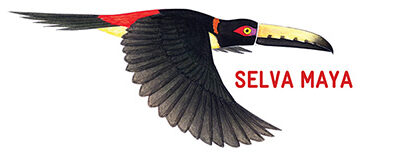
ADVC & OTHER CONSERVATION MODALITIES
AREAS VOLUNTARILY DESIGNATED FOR CONSERVATION
In Mexico, the General Law of Ecological Balance and Environmental Protection (LGEEPA) incorporates other instruments that promote the active participation of communities on environmental management. Such is the case of the recognition of properties, under any property regime, as “Areas Voluntarily Designated for Conservation” (ADVC). This protection category has added a little more than half a million hectares to Mexico’s protected natural areas.
This instrument directly involves society in the conservation of biodiversity. Since it is voluntary, the owners assume the commitment to protect and manage their properties in a sustainable manner, assuming the responsibility to protect them without imposing modalities or restrictions on their property.
ADVCs are considered productive sites dedicated to a function of public interest, since they:
- Provide environmental services.
- Contain and safeguard diverse species of flora and fauna.
- Contribute to the representativeness and ecological connectivity between the existing decreed NPAs.
- Promote the culture of conservation and sustainable development, among individuals, indigenous peoples and civil associations.
CONANP and the Protection and sustainable use of the Selva Maya Project supported the adoption of this protection category, promoting the creation of sustainable models of territorial management and land use, as a strategy that contributes to the conservation of the Calakmul Biosphere Reserve.
The natural resources conservation agreements established in 10 ejidos in the municipality of Calakmul, Mexico, were incorporated into their community management plans. Based on it, CONANP granted a certification as ADVC, raising the protection status to the same level as any other federal protected area. The distinctive feature of these ADVS is that they were promoted by the landowners themselves, indigenous peoples, social organizations or ejidos.
Currently, the Support for the monitoring of biodiversity and climate change in the Selva Maya Project guides the process of monitoring biodiversity with emphasis on the control and surveillance efforts made by theADVC. It is expected that the results obtained will aim to design strategies that promote the conservation of biodiversity and its sustainable use.
Find on this map the 10 ADVC of Calakmul, Mexico.
OTHER CONSERVATION MODALITIES
In order to, among other things, preserve the country’s representative natural environments, ensure the sustainable use of natural resources, reduce the vulnerability of society and ecosystems to the effects of climate change, maintain and increase carbon sinks and guarantee ecological connectivity between terrestrial ecosystems, in addition to Protected Areas, SEMARNAT considers biological corridors and other conservation modalities.
An example of these other modalities are the so-called tolches, that is, bands of tree vegetation 20 meters wide, which are along rivers and roads, and the legal estate; or, 2 km wide strips that are found around the Mayan settlements. These vegetation areas have been formed and maintained by the Mayan inhabitants of the region for the protection of lagoons, apiaries, corn fields, rivers, and cenotes. They also provide shade and resting spaces for farmers in transit, and are a nearby source of firewood, fruit, building materials and even round wood.
